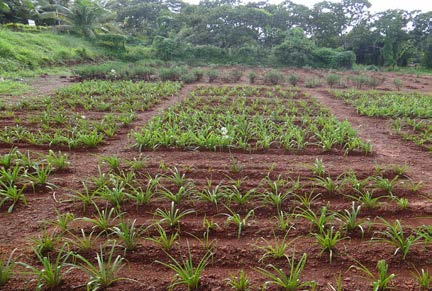
The Tuberose, known scientifically as Polianthes tuberosa, is a native of Mexico but is enjoyed worldwide. This flower can grow to about 3 feet in height, and each stem may develop several layers of white flowers. These flowers bloom by night and have a very strong, sweet fragrance that many people love and find quite soothing.
Tuberoses are cultivated not only for perfumery but also for their ornamental value. They are grown in flower beds or raised indoors in pots and planters. They prefer sunny locations with well-drained soil. Since they require favourable warmth, they are cultivated mainly in tropical and subtropical areas.
In addition to perfumery, tuberoses are also used in traditional medicine and cultural ceremonies. The perfume’s uniqueness and fragrance surely make it one of the most preferred flowers in any floral arrangement or a simple bouquet.
Whether you’re a gardener or just someone who loves beautiful flowers, tuberoses are a wonderful choice.
Types of Tuberose in India
Tuberoses are very much liked in India for their beautiful flowers and powerful fragrance. Various varieties of tuberoses are grown in this country. Let’s check its varieties below.
- Single flowered Tuberose
- Double Flowered Tuberose
- Pearl Tuberose
- Single Flowered Tuberose ‘Single’
7 Medicinal Benefits of Tuberose
Although tuberose flowers are primarily well known for perfuming and decoration purposes, they still possess some medicinal value. Here are some of the medicinal benefits of this flower.
- Works as an antioxidant
- Have anti-cancer properties
- Used as mosquito repellent
- Heals the wound
- Treats fungal and bacterial infections
- Aids digestion
- Good for skin health
Steps Involved in Tuberose Cultivation in India
In Tuberose farming, various steps are involved, such as climatic conditions, soil preparation, plantation, irrigation, harvesting, etc. These steps help you to cultivate healthy, vibrant tuberose flowers. Let’s understand these processes in detail below.
1. Weather Conditions
- Temperature: Tuberose plants are very vulnerable to frost. In case of cold temperatures, protect the plants or wait for the frost period to pass before planting them.
- Humidity: It needs a medium level of humidity. Too much humidity could cause fungal problems; hence, the plant should have good air circulation around it.
2. Soil Preparation
- Soil Testing: Before planting, test your soil for nutrient levels and pH. You can buy a test kit or even send a sample to your local agricultural extension office.
- For larger gardens or farms, a versatile Mahindra tractor 50 hp price can efficiently plough and prepare the soil. This can easily attach any implement, which will help in the effective preparation of the soil.
- Soil Drainage: If your soil holds too much water, consider creating raised beds or adding sand to improve drainage.
3. Plantation
- Spacing: The plants should be well-spaced from one another. Overcrowding reduces air circulation and increases the risks of diseases.
- Depth: Sow the bulbs at the correct depth. When planting too shallow, the bulbs may be exposed to temperature extremes, which harms them. On the other hand, planting too deep will delay growth.
- Mulching: Spread mulch around the plants to conserve soil moisture and prevent weed growth.
4. Irrigation
- Watering Methods: Water through drip irrigation or soaker hoses to enable the water to reach the plants’ roots directly. These methods will help avoid water wastage.
- Water adjustment: Modify the frequency and amount of water based on climatic factors and crops at different stages. Plants require more water during flowering.
5. Control of Pests and Diseases
- Integrated Pest Management: Use IPM techniques, such as regular monitoring, utilizing beneficial insects, and crop rotation, to help control pests and diseases.
- Preventive Measures: Keep the garden clean by collecting debris and diseased plants. This lowers the risk of pest and illness spread.
6. Harvesting
- Flower Stems: For the best quality, cut flowers in the morning when they are still cool. Handle gently to avoid damaging delicate petals.
- Post-Harvest Care: Immediately after cutting, put flowers in water to prevent them from drying out. Add preservatives to the flowers for a longer shelf life.
- For easy handling of harvested flowers, one can use a Powertrac 439 tractor. This tractor can easily lift 1600 kg. Additionally, Powertrac 439 price starts from Rs 7,20,000 and goes up to Rs 7,40,000 in India.
7. After Harvesting
- Processing: If the flowers are to be sold commercially in stores, some processing or packing may have to be done. Farmers should keep them cool to prevent loss of freshness
- Storage: If you are saving tuberose bulbs for planting the next season, store them in a cool, dry place, checking regularly for rotting or disease.
The Final Words
Tuberose cultivation in India offers a very good profit return to the farmer. By carefully managing soil preparation, irrigation, and pest control, you can grow high-quality flowers that are in demand. Proper harvesting and handling will maximize the market value. Therefore, tuberose farming presents an extremely lucrative opportunity for improving earnings while enjoying the beauty of these fragrant blooms.







